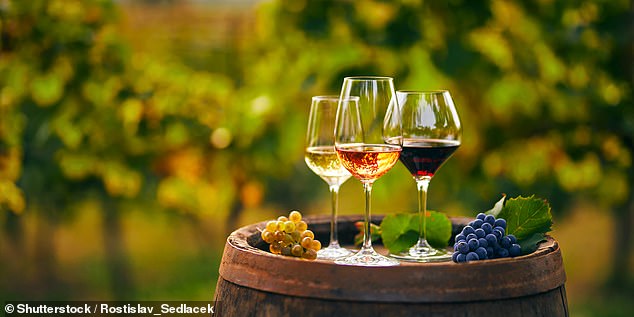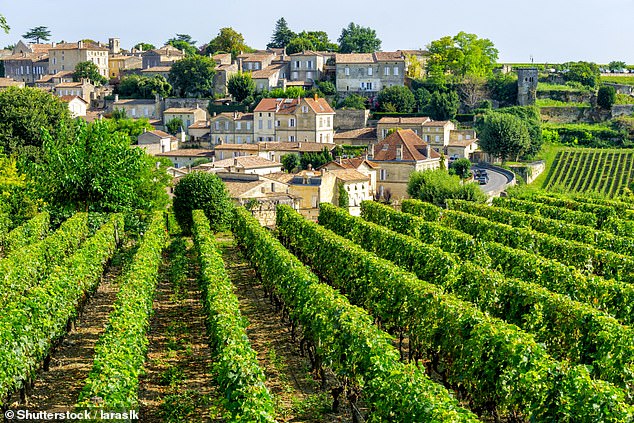Climate change is making wine taste BETTER: Warm summers and wet winters yield better quality vintages, study finds
- Years with warmer summers and wetter winters result in better summers
- These are conditions that are expected to become more common thanks to climate change
The doom and gloom surrounding climate change tends to offer a bleak picture of the future.
But there may be a glimmer of hope, as researchers from the University of Oxford have found that global warming is improving the quality of wine.
An analysis of 50 years of wine results from the Bordeaux wine region found that years with warmer summers and wetter winters resulted in better vintages.
These are conditions that are expected to become more common thanks to climate change.
“Overall, we’re seeing a trend around the world that with more warming, summers are getting stronger,” said Andrew Wood, lead author.

The doom and gloom surrounding climate change tends to offer a bleak picture of the future. But there may be a glimmer of hope, as researchers from the University of Oxford have found that global warming is improving the quality of wine (stock image)
In the study, the researchers set out to investigate the link between climate change and wine quality by analyzing wine results in Bordeaux from 1950 to 2020.
By comparing these results with weather models, they can test whether the quality of the wine is affected by factors such as season length, temperature and rainfall.
Overall, the results found that wine quality tended to improve between 1950 and 2020.
Researchers say this could be due to the warming of the climate during that period, or thanks to the increased use of technology.
“The trend, whether it’s driven by the preferences of wine critics or the general population, is that people generally prefer stronger wines that age longer and give you richer, more intense flavors, higher sweetness and lower acidity,” Wood said.
Drilling down into the findings, the researchers found that weather affected wine quality throughout the year, not just during the growing season.

In the study, the researchers set out to investigate the link between climate change and wine quality by analyzing wine results in Bordeaux from 1950 to 2020 (stock image)
In general, high quality wines were associated with colder and wetter winters; warmer and wetter springs; hot and dry summer; and cool and dry autumns.
Climate change is already resulting in these types of weather patterns in Bordeaux, the researchers explain.
This suggests that as temperatures continue to rise, the quality of wine will also increase.
“With projected future climates, given that we’re more likely to see these patterns of warmer weather and less precipitation in the summer and more precipitation in the winter, summers will likely continue to improve in the future,” Mr. Wood said.
The team notes an important caveat – this is only true up to the point at which water becomes limited.
“The problem in scenarios where it gets really hot is water: if the plants don’t have enough, they eventually fail, and when they fail, you lose everything,” Wood added.
“But the general idea or consensus is that wines will continue to improve until the point where they fail.”
While this study focused on Bordeaux wines, the researchers now hope to study other wine-growing regions to see if the same findings apply.
(tagsTranslate)daily mail(s)sciencetechnology(s)University of Oxford(s)Climate change and global warming
